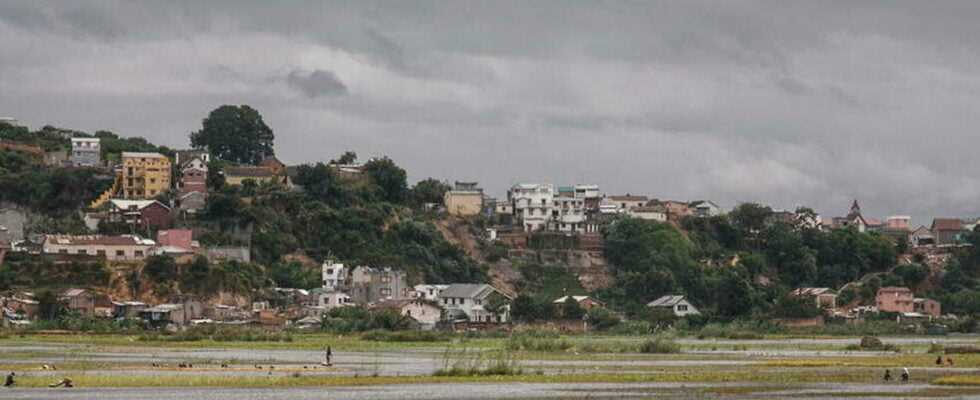Madagascar is preparing for the worst. The powerful tropical cyclone Batsirai hit the island on Saturday evening February 5, according to local relief, with gusts at 235 km / h raising fears of “significant and widespread damage” on the big island in the Indian Ocean. After pouring torrential rain for two days on the French island of Reunion, Batsirai made landfall in the district of Mananjary, more than 530 km southeast of the capital Antananarivo.
“Batsirai hit Mananjary around 8 p.m. local time” (5 p.m. GMT), said meteorologist Lovandrainy Ratovoharisoa, reached by telephone by Agence France-Presse. Batsirai made landfall “14 km north of the city of Mananjary, at the intense tropical cyclone stage”, with a “wind of 165 km / h” and gusts at “235 km / h”, confirmed Faly Aritiana Fabien , an official of the National Office for Risk and Disaster Management. A little earlier, the weather service of Madagascar had warned that “significant and widespread damage is (…) to be feared”. Météo-France had for its part forecast several hours ago winds of up to 250 km / h and waves of 10 to 15 meters, evoking a “very serious threat”.
“The government must absolutely help us”
The inhabitants are preparing to cope with the means at their disposal on the island, one of the poorest countries in the world, already hit by a deadly tropical storm in January, Ana, and swept away on Friday by the wind and continuous rain. Ana, which had also affected Malawi, Mozambique and Zimbabwe, had caused a hundred deaths – including nearly sixty in Madagascar – and tens of thousands of victims. In the coastal town of Vatomandry (east), hours before Batsirai’s arrival, more than 200 people crowded into a room in a Chinese-owned concrete building for protection, families sleeping on mats or mattresses.
A local official, Thierry Louison Leaby, complained about the lack of drinking water, the supply having been cut before the storm. “People are cooking with dirty water,” he said, fearing an outbreak of diarrhea. “The government must absolutely help us. We weren’t given anything.” Outside, dishes and plastic cups collected rainwater pouring from corrugated iron roofs, often reinforced with heavy sandbags or jerry cans.
The impact of Cyclone Batsirai in Madagascar is expected to be “considerable”, including in areas still recovering from Storm Ana, a spokesperson for the Office for the Coordination of Humanitarian Affairs (Ocha) warned on Friday. UN, Jens Laerke. The director of the World Food Program (WFP) for Madagascar, Pasqualina Di Sirio, said she anticipated “a major crisis” on the Big Island, where the cyclone could affect more than 600,000 people, including 150,000 displaced. “We are very nervous,” she told reporters by videoconference.
Reinforced roofs
Search and rescue teams have been placed on alert, stocks of supplies have been prepared and planes are ready to intervene in support of the humanitarian response. Razafimahefa Étienne, a farmer from Madagascar, is already worried about food. The family will have enough to last until Saturday. “But from Sunday, we will have nothing. We will try to find another solution, but if there is nothing, we will eat bananas”.
The International Federation of Red Cross and Red Crescent Societies (IFRC) estimates that around 4.4 million people in total are at risk in one way or another. “Malagasy Red Cross teams and partners are on alert and deployed in communities to warn them of the approaching storm, while emergency stocks are moved to facilitate the storm. access, explained its secretary general Andoniaina Ratsimamanga. Each year during the hurricane season (from November to April), about ten storms or cyclones cross the south-west of the Indian Ocean, from east to west.
